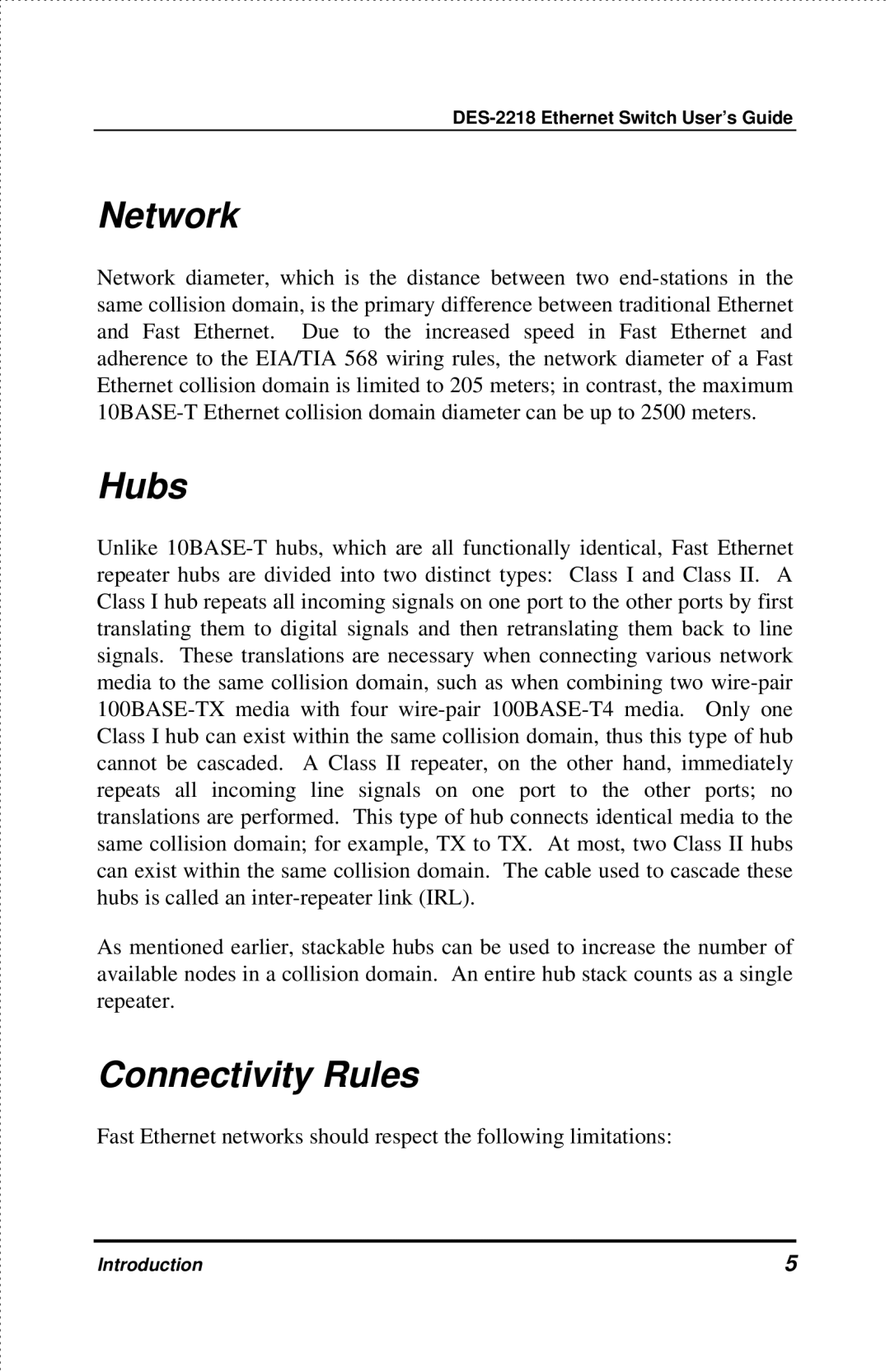DES-2218 specifications
The D-Link DES-2218 is a robust and versatile 18-port Layer 2 managed switch designed for businesses seeking to enhance their network performance and reliability. With a combination of advanced features and reliable technologies, the DES-2218 offers a powerful solution for managing network traffic efficiently.One of the standout features of the DES-2218 is its advanced Layer 2 switching capabilities. The switch supports a variety of network protocols, making it suitable for various business applications. The 18 ports, which include 16 10/100 Mbps Fast Ethernet ports and 2 Gigabit SFP slots, provide flexibility for both copper and fiber optic connections, allowing organizations to implement a tailored network infrastructure according to their specific needs.
The switch also incorporates VLAN (Virtual Local Area Network) support, enabling the segmentation of traffic for improved security and performance. This feature allows network administrators to isolate sensitive data and create efficient, manageable traffic flows that enhance overall network efficiency. Furthermore, the DES-2218 supports 802.1Q VLAN tagging, which is essential for implementing VLANs in larger, more complex networks.
In addition to VLAN capabilities, the DES-2218 offers robust Quality of Service (QoS) features. These QoS functionalities prioritize network traffic, ensuring that critical applications receive the bandwidth they need for optimal performance. This is particularly beneficial for businesses that rely on video conferencing, VoIP services, or other real-time communications.
Another notable characteristic of the D-Link DES-2218 is its support for network management protocols such as SNMP (Simple Network Management Protocol), RMON (Remote Monitoring), and WEB Management. These features enable administrators to remotely monitor and manage the network, ensuring that any potential issues can be addressed before they impact business operations.
Security is another priority in the design of the D-Link DES-2218. The switch supports various security features, including port security and MAC address filtering, which help protect the network from unauthorized access and ensure that only legitimate users can connect.
Overall, the D-Link DES-2218 is an feature-rich managed switch that combines essential technologies and characteristics to deliver a reliable networking solution for businesses of all sizes. With its extensive management capabilities, enhanced security measures, and advanced VLAN and QoS support, the DES-2218 is an ideal choice for organizations looking to optimize their network performance.

